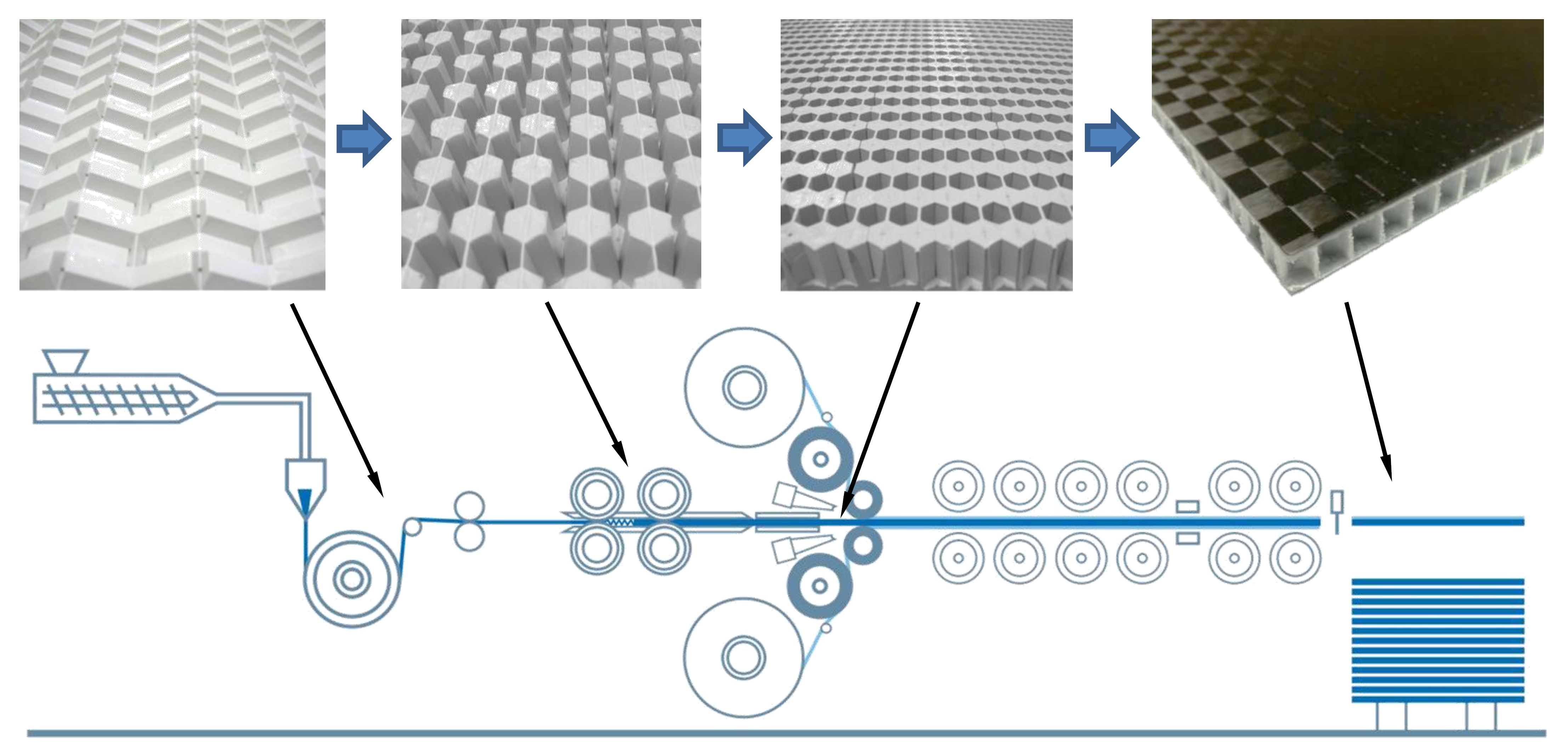ThermHex Waben GmbH and the Fraunhofer Institute for Microstructure of Materials and Systems IMWS in Halle are working together in a joint research on the development of production and processing methods suitable for series production of organic sheet sandwich semi-finished products.
Continuous production of thermoplastic honeycomb cores
The patented ThermHex process enables continuous in-line production of thermoplastic honeycomb cores. In other processes, each layer of the honeycomb must be cut individually from a block and then laminated. This makes the conventional production methods for honeycomb cores time-consuming and expensive – with ThermHex, all production steps take place within one production line.
After the extrusion the material sheet is deep-drawn by rotary-vacuum forming, folded, laminated and cut to the length required by the customer. The production plant in Halle can be used to produce honeycomb cores from 3 to 30 mm thick and with an individual length of up to 6 metres; the production rate reaches up to 10 metres per minute.
The honeycomb cores are used in particular by the fiber composite industry to make sandwich panels and components which, for example, are used in truck bodies, car interiors or bathroom pos and in swimming pools.
The process is more resource efficient and significantly more cost effective than the conventional processes for the production of honeycomb cores. With this process, ThermHex Waben GmbH can produce large quantities considerably more cost effectively and since the start of production in 2010 has repeatedly increased its production volume up to the present day 500,000 m².
Most recently, in December 2015, the production capacity for honeycomb cores was doubled again with the installation of a new extruder with higher throughput rate. In this way, on the one hand the delivery periods for customer orders reduces significantly. On the other hand, scope results for forward-looking development projects and innovations, for example, for a joint research project with the Fraunhofer Institute for Microstructure of Materials and Systems IMWS. This objective of this project, supported by the EU through the EFRE programme, is to research into the production and processing of organic sheet sandwich semi-finished products suitable for series production.
Flat organic sheet sandwich semi-finished products
Organic sheet sandwich semi-finished products are made up of very thin layers of thermoplastic fiber composite materials (organic sheets), which are held apart by a thermoplastic honeycomb core, so that a high level of stiffness is made possible with minimum weigh, and without additional stiffening ribs. These semi-finished products are particularly cost efficient when they are attached to the honeycomb in-line in a continuous process and are bonded with the core.
In further production steps they are then processed further to make components. To this end, for example they are formed and functionalized through injection moulding. Only the continuous ThermHex process of honeycomb production in one production line enables the production of cost-efficient flat organic sandwich semi-finished products in continuous production, which integrates the continuous lamination of the organic sheet cover layers. With automated in-line quality control, critical quality characteristics can also be monitored efficiently during the process.




